
Yi Zeng is a Chinese photographer and documentary director. He spent many years working as a journalist and producer for state media in China. Later, to pursue his personal expression of art, and to be more committed to preserving the neglected cultural legacies in a fast-growing economy, he left his former role, and embarked on a creative career that was lonely and challenging, but also more enjoyable to him.
A self-proclaimed humanist, Zeng does not describe himself only as a photographer. To him, the lens is a painting brush to record and reflect on the world at large. What he wants to record and explore is the multi-ethnic and pluralistic cultures, folk customs, and religious faiths in China, as well as the development and reproduction of such pluralistic cultural gems.
To guarantee the cultural taste and high quality of the images, Zeng mainly uses large and medium-format cameras for his photographic creation. The aesthetic principle he upholds is a quote from Lao Tzu, an ancient Chinese philosopher: “In the pursuit of learning, knowledge is increased daily. In the pursuit of Dao (the Way), actions are reduced daily. Fewer and fewer actions are taken to the point of none. When nothing is done, nothing remains undone.” Lao Tzu’s philosophy of Dao, when interpreted in artistic expressions, is the principle of simplicity.
He has spent more than 20 years shooting in provinces and regions across China from the east to the west, the north to the south, and has maintained his passion to delve deeply into the Tibetan culture. His “losses”: countless rolls of film, 3 off-roaders, several hundred thousand kilometres of journeys and all sorts of adventurous experiences and his gains: the meaning for both the time and space he recorded.
Given his comprehensive and enduring art creation and imaging documentation of the ethnic cultures, his works are probably valuable literature or academic archives worth studying for future researchers. His long-term commitment to culture and art and his career experience have also earned him the recognition from art institutions and government agencies. "Tibetan Nun", "Song in the Sky" and "Overlooking the Gongga" won him the 2021 (IPA) Lucie Award. The same year, Sichuan Provincial Government purchased his two 3*18m large format photos for a conference hall: A Bird’s View of the Minya Konka, and The Land of Abundance in Snow. He also led a communication team for Chengdu City Government for the Moscow International Food Festival and directs promotion videos for Chengdu City Government, as well as other district governments of the city. He is the director of several documentaries about Tibetan culture and non-profit themes: An Introduction to Sichuan: Chapter of Guangyuan, part of a national geographical documentary project. Apart from his creative work, he also teaches photographic and art courses to institutions and photographer societies. He is a contract photographer of Fujifilm and serves as a jury member in many photography contests.
As a Han Chinese photographer, apart from learning the Tibetan culture, Zeng actively engages in charity work in Tibetan areas. He raised money and goods for the impoverished Tibetan children and found resources to build small libraries for them. Thanks to his honest communication with all classes of the Tibetan people over the years, he was granted the privilege to experience the Tibetan religious rituals and momentous events that are normally inaccessible to others. In his shooting missions, he has been tested by freezing temperatures, car accidents and other life-threatening dangers, and once spent three days walking 54 kilometres at an elevation of 6,000 meters.
Statistics (as of December 2021)
Film images: 34,776 images taken, with 17,388 scanned
Digital images: 81,422
Images created: 116,198
Total milage of creative journeys (domestic): 466,731.3km
"Khampa Culture" photography exhibition, France, 2004
Epic Hymns, personal exhibition in Chengdu, 2005
Basking of Buddha, displayed in the exhibition of the 22nd International Photography Festival, September 2006
Solitary Hymn, displayed in “Right in Front of Your Eyes”, the 2010 Invitation Exhibition of Contemporary Photographers, Chengdu, China
People from Original Homeland, selected to display in Best of Show, IPA China Grand Prix 2014, displayed in New York
Zeng attended the 4th China-EU Forum in Brussels, Belgium, in 2014; As the only Chinese artist invited, his work Ritual was displayed during the event
Ritual was displayed in the 2015 Chinese Culture Year in Liege, Belgium
Lucie Awards and IPA the International Photography Award “Best of Show" Exhibition - Beijing Academy of Arts Photographers Exhibition, 2014
Lucie Master Photographers & IPA Exhibition, Beijing, March 2015
Clearing the Smog on the Road to Success, personal exhibition in Greenland Group gallery, Chengdu, 2017
Clouds Boiling, Merit Award, IPA & Lucie Foundation, 2018
Tibetan Opera, Merit Award, IPA & Lucie Foundation, 2020
Contract photographer of Olympus, Japan
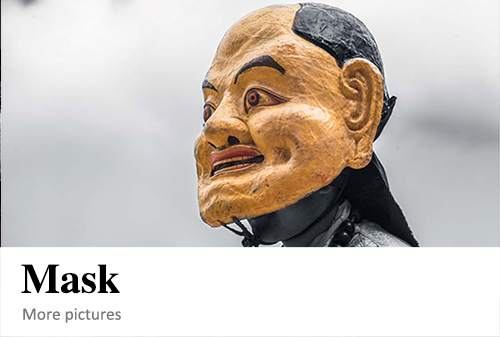
A performing style of the Lhamo ( Tibetan opera) by Tibetans. Different opera contents are conveyed through each individual mask image. The mask in this picture interprets the great god (Buddha Shakyamuni), leading other immortal figures to the world to bless the world.
The yellow mask represents the radiant face, great merit, and knowledge. It is worn by the Living Buddha and Celestial Being.
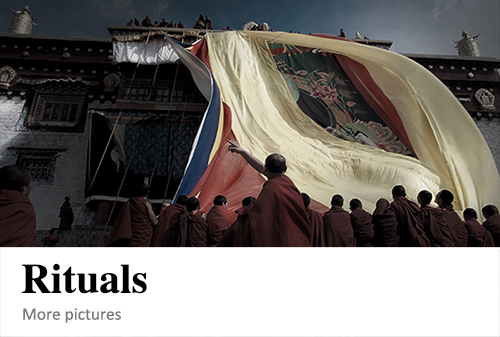
This is one of the most important elements of Tibetan Buddhist practice: the retreat. Lama practice entails meditation, chanting and practice in a place of isolation. Minimums 3 years, and up to 30 years, are required, with some never leaving the retreat for life. The retreat venues are called retreat caves. As nowadays the retreat is often held in a built-up environment, the older retreat caves have become history.
This photograph has therefore become a rare and valuable visual heritage.
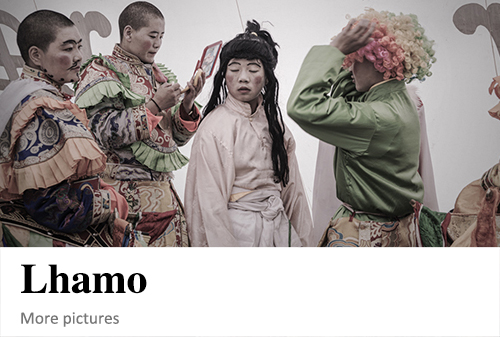
If there are any other dimensions in our world. I don't know. But every time I enter Tibet, especially when I watch “Lhamo”, I feel like I have entered another dimension of space-time.From God monkey and Raksasi, from the Buddha to Gesar, they danced alone like this.After centuries of evolution, it has been " deduce " into modern society, as if everything has not changed, but it is quietly changing our spirit.
A space-time existence that loses common sense in the world, and a mysterious feeling that suspends my mind.This is the unique charm of Lhamo and one of the reasons why I am constantly fascinated.
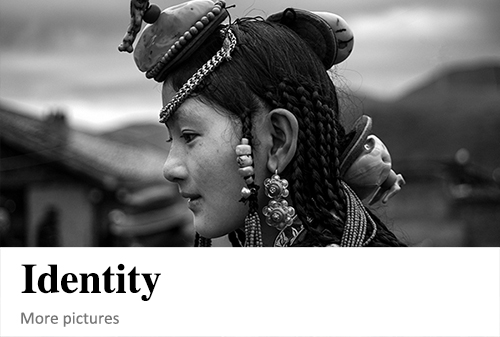
Fortitude, gentleness, solemnity, revere, piety, elegance, free ,natural and unrestrained, bold and unrestrained are the fusion of all their personalities.
Whether it is Qian Zang, Wei Zang, Kangba, Amdo or Jiarong, they all have a common name: Tibetans.
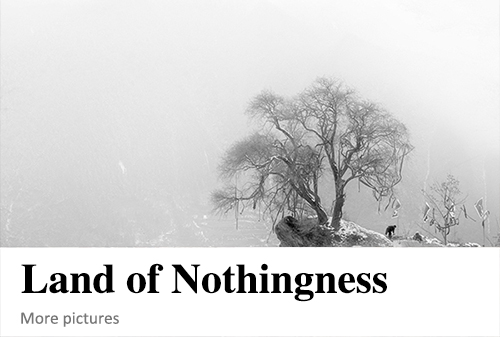
In the land of goodness, in the wilderness, they walk, beat the drum, chant, dance and plough, following the flow of heaven and earth, looking up to the goblets of love in the "land of nothing". The thoughts are blowing in the wind.
According to what Westerners can approach, one can borrow a passage from the Bible:
Garden of Eden: There is a river flowing out of Eden to moisturize the yard... — “The Bible” Genesis
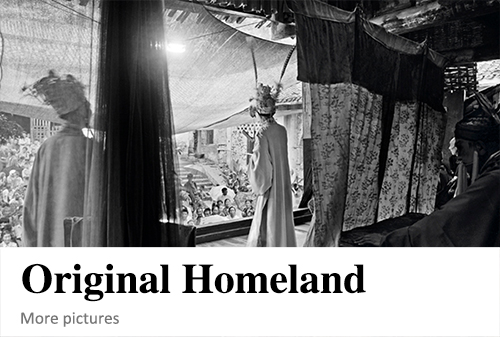
( Declining Ancient Townships and Villages)
"Hometown / Original Home" does not necessarily refer to a particular figurative expression. It can be an ever-lasting image of a grandmother, a grandfather, a small pond near home, or a dream-like memory of our childhood. It is a distant and warm reminder of our shelter that we cannot let go of as adults, and the root of our shared childhood memories as a nation.
Each year, during certain important festivals in the Chinese lunar calendar, the villagers of the Chinese countryside hold their own folk cultural events, including local theatre and trading of goods.
In this photo is a local play performed in a village theatre in Qi Jiang.
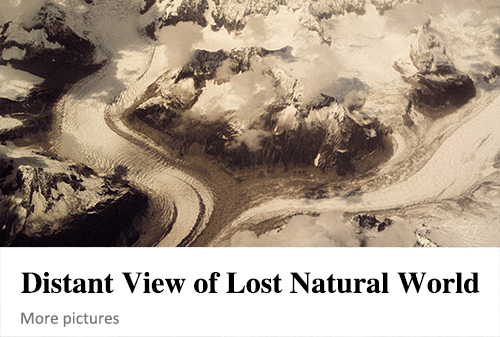
Glaciers, the water of life on earth, are the source of human life. Yet, the excessive development of human civilization, glaciers have melted, forests have vanished, and fields have disappeared...
In the process of building an arrogant "civilization", human beings are moving towards glory or self-destruction?
Photographed on the Tibetan plateau in Ngari Prefecture, Tibet Autonomous Region, at an altitude of around 6,000-8,000 metres.

Clouds Boiling, Merit Award, IPA & Lucie Foundation, 2018
Tibetan Opera, Merit Award, IPA & Lucie Foundation, 2020
"Tibetan Nun", "Song in the Sky" and "Overlooking the Gongga" won the 2021 (IPA) Lucie Awards International Photography Foundation Honorary Award

Works have been published in mainstream media and magazines both home and abroad (for details, see his portfolio file), as well as displayed in some major exhibitions
Basking of Buddha, in Images of Western China, album, Exhibition of Fine Works of Sichuan Photography
Tibetan Paper, Chinese National Geography, 2009 December Issue
Tibetan Opera, Epic Hymns, included in China Photographic Art Yearbook, 2010, as national-level collection
Work covered by China Daily (US Edition), November 2015
Work covered by China Daily (European Edition), November 2015
Original Homeland, in Confucius Institute, May Issue, 2015, French Edition
“Langmusi Town”, China National Geography February issue, 2016
AXD Magazine
"Exceptional deals" was selected for the national collection of the "Chinese Photography Art Yearbook- Volume 2009"
"Tibetan Opera" - The Chanting Epic" was selected for the national collection of "Chinese Photography Art Yearbook"- Volume 2010"
"Buddha's Light in the Sutra Hall" was selected for national collection of "Chinese Photography Art Yearbook - Volume 2011 "
" Increase of the Windhorse" was selected for the national collection of "Chinese Photography Art Yearbook -Volume 2013 "